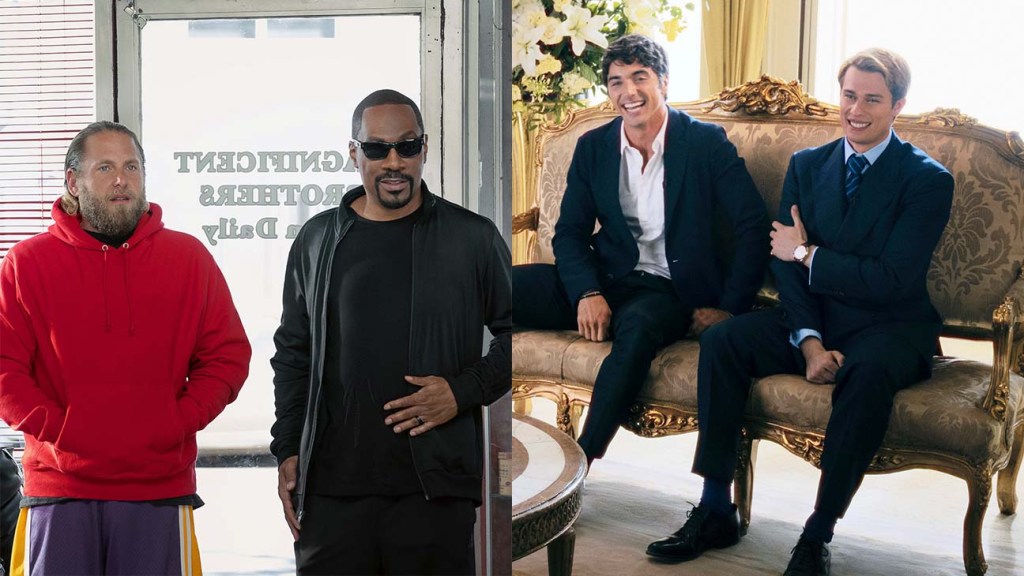
‘You People’ (Netflix) and ‘Red White and Royal Blue’ (Prime Video) were two of the top streaming movies of 2023, both featuring diverse casts.
Tyler Adams/Netflix/Courtesy Everett Collection; Jonathan Prime/Amazon Studios/Courtesy Everett Collection
For the first time since UCLA began publishing its annual Hollywood Diversity Report a decade ago, the white share of the U.S. population (56.4 percent in 2023) is accurately reflected in their onscreen representation – at least when it comes to streaming movies (51.7 percent), according to the latest installment of the university’s study, released today. The Hollywood Reporter is framing the racial/ethnic breakdown of film roles (720 in total last year) this way because the disaggregated BIPOC racial groups differ in terms of their proportionate representation, with Latinos once again experiencing the biggest disparity between representation onscreen (8.9 percent) and in real life (approximately 19 percent).
The gender and racial diversity of lead characters in streaming reached new highs (51 percent women, 45 percent POC) in 2023, but most white women (77.5 percent) and BIPOC (58.6 percent) lead characters appeared in movies made for less than $20 million, while the majority of white male leads (57.2 percent) were found in movies budgeted above that threshold.
There was a similar ceiling behind the camera. Although female and BIPOC directors had more opportunities in streaming (31 percent of streaming movies were directed by women and/or a person of color) compared with theatrical features (14.7 percent and 22.9 percent, respectively), they were less likely to get a shot at one of the few big-budget jobs (just 3.2 percent of streaming films were made for $100 million or more, all of them by white men). No woman directed a streaming movie for more than $50 million.
“Creators that represent diverse backgrounds face a mixed bag,” study co-author and UCLA doctoral candidate Michael Tran said in a statement. “On one hand, they have a chance to lead or participate in these streaming projects, but then the studios are putting on the brakes financially and there is less room to show success.”
Despite fewer resources on average, movies that reflected accurate proportionate representation – 41 percent to 50 percent casts of color – enjoyed the highest ratings across all audience demographics and the most social media engagement. In addition, streaming audiences were majority women and/or people of color (as was the case for nine of the top 10 films across all platforms).
“Women and people of color are key audiences that simply cannot be ignored by Hollywood,” report co-founder and UCLA Entertainment and Media Research Initiative director Ana-Christina Ramón said in a statement. “Once again, we found that successful streaming films are propelled to the top by households of color. And among the highest-rated films, women are the majority of the viewers.”
However, as with the rest of Hollywood, the streaming film industry has much room for improvement when it comes to disability inclusion. Actors with known disabilities played less than 5 percent of all film roles across the top 100 English-language scripted streaming features, none of them leads.
“Diversity isn’t an impediment. It’s a draw,” said report co-founder and UCLA executive vice chancellor and provost Darnell Hunt in a statement. “It should be considered a strategic business imperative if Hollywood wants to survive.”









